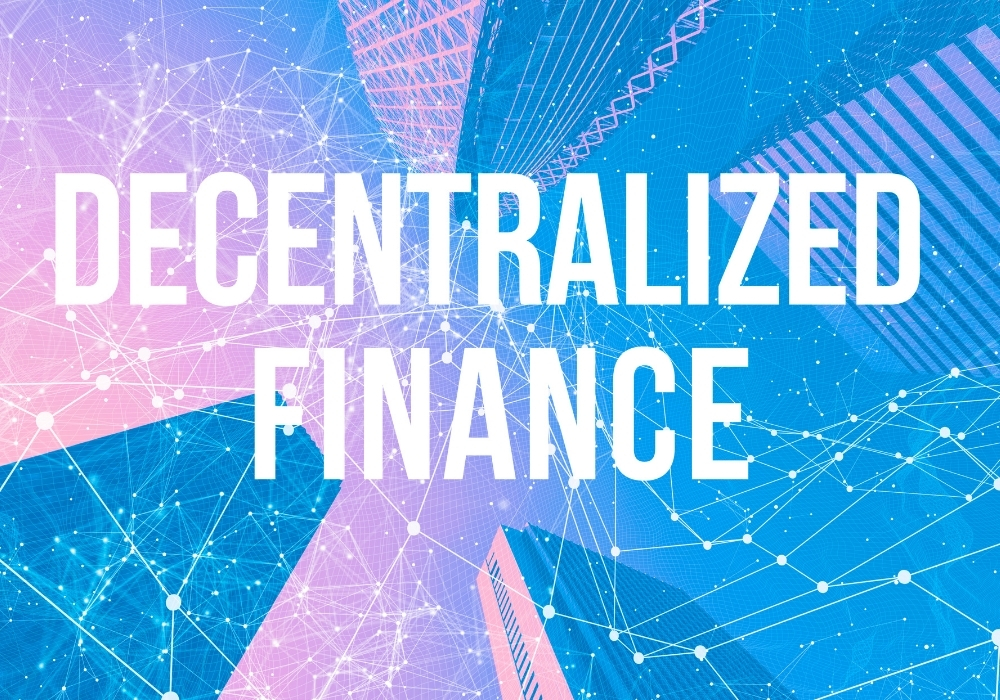Decentralized Finance (DeFi) refers to financial transactions and services that take place on a platform built on blockchain. Unlike traditional financial services which are controlled by traditional institutions such as banks, DeFi is conducted by numerous entities, whose identities are often unknown.
The essence of DeFi is to remove the bureaucratic nature of centralized financial services, reduce hindrances to transactions and eliminate unnecessary (and sometimes unfair) transaction costs.
While traditional financial services are run by commercial banks, regulated by central banks, and also facilitated by credit card companies, DeFi transactions are conducted across the blockchain. In particular, the most dominant ecosystem for DeFi transactions is the Ethereum blockchain, which hosts several Decentralized Applications (dApps).
Components of DeFi Applications
1. Decentralized exchanges (DEXs)
DEXs are platforms that facilitate DeFi transactions without the involvement of middlemen. In DeFi, transacting entities reach out to each other directly to trade in cryptocurrencies without the intervention of a third party. This form of transaction carried across trustless ecosystems, safeguards privacy, removes bureaucracy, and reduces transaction costs.
The downside to this is that one can lose their assets without having a backup solution. Uniswap and SushiSwap are among the most popular DEX platforms. The opposite of DEX is centralized exchanges such as Coinbase, which facilitate transactions and ensure the safety of those transactions. The downside to this is that you have to divulge some of your personal information and incur transaction costs.
2. Lending Platforms
These are platforms that allow borrowing and lending in a free-for-all system, facilitated by smart contracts. Lenders make profits from interest earned from the money lent. On the other hand, borrowers enjoy access to simplified terms of lending, without going through bureaucratic loan processes associated with banks.
3. Prediction Markets
These are markets that facilitate betting or prediction of the outcome of events. The difference with traditional wager markets is that these predictions are done across blockchain and transactions are completed through smart contracts.
4. Yield farming
This is a mechanism through which one can deposit cryptocurrency into certain platforms and lock them up for a specific period, after which they will earn rewards. Aave and Compound are the leading platforms in the yield farming segment.
5. Stablecoins
These are crypto assets whose values are tethered to fiat currencies and other valuable non-cryptocurrencies. This is a way of cushioning investors against the volatile nature of cryptocurrencies. Stablecoins offer investors more predictable price oscillations, thereby giving them peace of mind as compared to investing in cryptocurrencies directly.
Staking
This is a mechanism through which investors use smart contracts to earn from tokens locked. Tokens are essential to the performance of proof-of-stake blockchains, and it, therefore, makes sense for persons locking their tokens to earn rewards in return. However, the tokens in each staking ecosystem have to be linked to a native asset, such as DOT for Polkadot.
Ethereum and DeFi
Ethereum is the most dominant network in the DeFi segment. Despite the high transaction lags attributed to the ecosystem, Ethereum has some major advantages.
The Ethereum smart contracts are highly decentralized, which means that their level of integrity is quite high, thus ensuring that it is almost impossible to interfere with the smart contracts.
The vast majority of DeFi is hosted on Ethereum. This makes it convenient for many users, because of the high level of interoperability achieved, across many different markets. This can be equated to the way most financial institutions have incorporated Visa and MasterCard into their operations because of their large worldwide network.
In addition, Ethereum’s blockchain supports many cryptocurrencies and their native tokens. This makes Ethereum quite flexible in recording most transactions in the crypto-sphere.
DeFi benefits
1. Offers unfettered freedom
DeFi is free for everyone, regardless of their status. As long as you have a PC or a smartphone, you can take part in DeFi transactions. This is unlike banks, which have bureaucratic procedures and require lots of personal information before allowing one to be their customer. In essence, DeFi has provided an opportunity for millions of unbanked and “unbankable” people to access a rich pool of financial services.
2. Tax savings
Borrowing through DeFi allows borrowers to own stablecoins in exchange for their Ether, which serves as collateral. Once you offset your loan, you get back your ETH, thus enabling you to profit from price movements.
3. Better interest rates
DeFi platforms typically earn investors higher rates of interest for their locked deposits than traditional banks. In addition, the transaction costs are relatively low compared to banks. Also, the terms of lending in DeFi are considerably more friendly and attractive than banks.
DeFi risks
Security concerns
While smart contracts are supposedly designed to offer a high level of integrity in transactions, they are not immune to external attacks. DeFi is relatively new, but many platforms offering the service have been targeted by hackers. In addition, smart contract bugs often compromise the performance of smart contracts, which, unfortunately, cannot be altered once written.
A heavy burden of responsibility
In the absence of intermediaries to facilitate transactions, the responsibility for ensuring error-free transactions lies squarely on users. If you make an error on your check deposit slip, your bank can help you rectify the mistake. However, it is impossible to correct human errors in DeFi, once the transactions are in process. This can lead to the loss of funds with no way of recovering them.
Sluggish periodic performance
The Ethereum ecosystem is at times flooded with tens of thousands of processes, which often lead to a painstaking slowdown in transactions. This can be inconvenient and costly when one is in a hurry.
Bottom line
DeFi is a disruptive but useful financial services option. It has changed the way we borrow, lend and earn money, and looks set to be with us for a long time.
However, being a new concept, it faces teething problems relating to insecurity and understanding by the masses. Users should therefore understand both the risks and benefits before involving themselves in DeFi.
